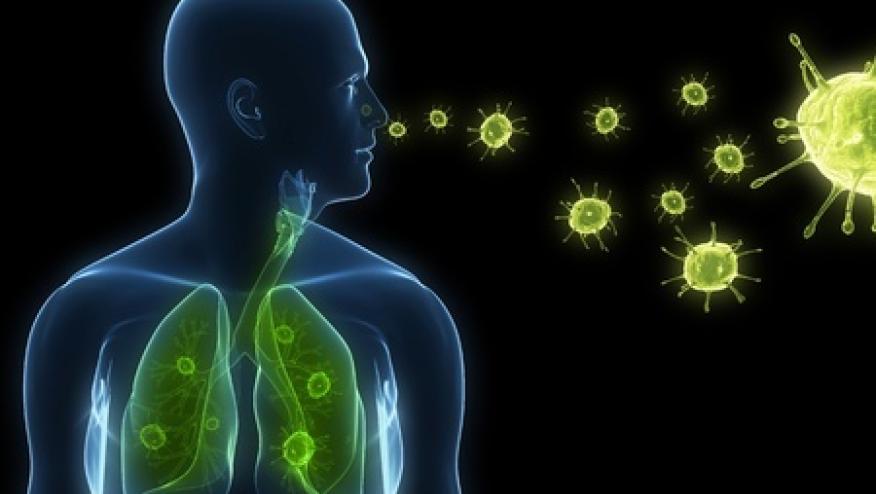Drugs Contribute to Infectious Risks in Lupus Save

Multiple patient- and disease-related factors -- including medication use -- were associated with the development of severe infections among patients with systemic lupus erythematosus (SLE), a Spanish study found.
In a multivariate analysis, the use of corticosteroids in dosages of 10 mg/day or higher was associated with an increased risk of severe infection (HR 1.271, 95% CI 1.034-1.561), while the use of antimalarials was protective (HR 0.998, 95% CI 0.997-0.999), according to Iñigo Rúa-Figueroa, MD, of Hospital Doctor Negrín in Las Palmas de Gran Canaria, and colleagues.
In addition, previous hospitalization for SLE more than doubled the likelihood of severe infection (HR 2.567, 95% CI 1.905-3.459), the researchers reported in Seminars in Arthritis & Rheumatism.
Almost one-third of deaths in SLE relate to infections, and rates of hospitalization for infections are 12 times higher than in non-SLE patients, but few data are available on factors that contribute to this high toll in SLE.
To explore these concerns, researchers retrospectively analyzed data from the Spanish Society of Rheumatology Lupus Registry, which included 3,658 patients whose median age was 33. A total of 90% were women, 93% were Caucasian, 5% were Hispanic (of Latin American ancestry), and fewer than 1% were other ethnicities. They were drawn from 45 centers in Spain. Mean follow-up was 10 years.
Severe infection was defined as hospitalization with parenteral antimicrobial therapy or infection-associated death. Among the most common SLE features were the presence of antinuclear antibodies, hematologic abnormalities, arthritis, and malar rash.
At the time of the severe infection, treatments included antimalarials in 55.2%, corticosteroids in 52.4%, azathioprine in 11.8%, rituximab in 1.9%, and mycophenolate mofetil in 1.4%. Mean time on antimalarials was 6.5 years. Doses of corticosteroids at the time of the infection were less than 10 mg/day in 53.1%, 10 to 30 mg/day in 30.2%, and higher than 20 mg/day in 16.7%.
During 2011 and 2012, there were 1,227 severe infections in 705 patients, with a mean rate of 1.7 infections per patient. A single infection was seen in 60.4%, two to five infections in 37.7%, and six or more in 1.9%.
The overall incidence rate was 29.2 (95% CI 27.6-30.9) per 1,000 patient-years, and the incidence rate for a second serious infection was 71.1 (95% CI 63.1-79.8) per 1,000.
The time from baseline to first infection was 5.61 years, while the time to a second infection was 1.86 years. Patients with two or more infections had higher disease severity scores (4.35 versus 3.42) and higher damage index scores (3.33 versus 1.84).
More than half of the infections were bacterial, and in almost one-third, the etiology was unknown. The site of infection most often was the respiratory tract (35.5%), followed by the urinary tract (15%).
A total of 208 patients died, with 24.5% of deaths relating to infection. Among fatal infections, bacteremia/sepsis was the predominant cause, reported in 42%, with respiratory tract as the source of infection in 34%.
On a bivariate analysis, factors associated with severe infection included previous hospitalization for SLE (RR 5.67, 95% CI 4.73-6.80, P<0.0001), and any use of immunosuppressants (RR 10.20, 95% CI 9.10-11.44, P<0.0001). In addition, increased risks were seen among patients with diabetes (RR 2.12, 95% CI 1.78-2.53, P<0.0001) and for those on dialysis (RR 3.31, 95% CI 2.80-3.92, P<0.0001). Any history of smoking also was a risk factor (RR 1.35, 95% CI 1.06-1.73, P=0.018).
Current use of antimalarials was associated with a lower risk (RR 0.49, 95% CI 0.43-0.57) as was past use (RR 0.76, 95% CI 0.65-0.88).On the multivariate analysis, additional factors associated with severe infection included increased age at diagnosis (HR 1.016, 95% CI 1.009-1.023), Hispanic ethnicity (HR 2.151, 95% CI 1.539-3.005), and smoking (HR 1.332, 95% CI 1.121-1.583), as well as higher damage and disease activity scores. Individual immunosuppressants including rituximab (Rituxan), abatacept (Orencia), and mycophenolate mofetil (Cellcept) also were associated with higher risks of infection.
As to why smoking might increase the risk for infections, including non-respiratory infections, the authors noted that tobacco use is associated with elevated rates of bacterial infections, "compromising the antibacterial function of leukocytes, including neutrophils, monocytes, and T and B cells."
The observation that Hispanic ethnicity was associated with higher risk of serious infections was interesting, the researchers noted, because those patients were living in Spain at the time of the study and had equal access to the Spanish universal health system as native-born patients. "This suggests that ethnicity, and not simply severity or socioeconomic factors, influences the incidence of infection," they wrote.
And as to reasons for protective effects for antimalarials, they suggested, "the alkalinization of phagolysosomes and the inhibition of DNA replication has been posited as one mechanism explaining the protective ability of antimalarials, particularly against intracellular microorganisms."
A limitation of the study was its retrospective design.










If you are a health practitioner, you may Login/Register to comment.
Due to the nature of these comment forums, only health practitioners are allowed to comment at this time.